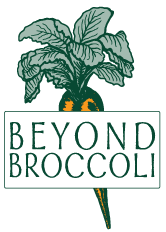Recently I stumbled upon an ad that Nestle’s Lean Cuisine brand aired earlier this year for it’s “Weigh This” campaign. The two-minute ad features women who are asked about their greatest accomplishments in life and their answers range from family and other important relationships in their lives to school, career and travel. The catch phrase is “if you’re going to weigh, weigh something that matters.” They also have a “diet filter” where you can sign up to have the word “diet” blocked from your media.
I love this ad and this message (haven’t tried the diet filter yet but like the concept). What’s not to love? I believe we (especially women) spend a ridiculous amount of time worrying about our weight. And because our culture has so completely fused the ideas of weight and health, if someone makes positive lifestyle changes that could improve their overall health and wellbeing, but they don’t lose weight doing it, they often give up on those changes. What’s the point if it doesn’t lead to weight loss, right? Ugh.
My dilemma about this ad is that it comes from a food company that specializes in frozen meals and has been solidly part of our “diet culture” for decades. Sure, this campaign is to re-spin the company toward health and wellness vs. dieting, but let’s be clear, pre-packaged frozen meals deliberately low in calories are still supporting a diet mentality and approach.
It is great that Lean Cuisine has reformulated their recipes and taken out some of the nasty or at least questionable additives that do a lot more for food manufacturers (via longer shelf life) than for eaters. It is also great that they are supporting a Girls Leadership organization. But I’d be a lot more excited about this ad campaign if it was put forth by a farm that produced high quality fresh food or a local farmer’s market. Sigh. (My farmer friends are now laughing hysterically at the idea they would have that kind of cash for advertising!) I prefer the trend towards eating more whole, fresh foods and preparing more of our own meals to buying packaged frozen meals. I realize however, that convenience is still in the top 3 reasons why people eat what they eat.
With a mix of optimism and trepidation I share this ad campaign. I do appreciate the small steps toward change. As I tell my clients “aim for progress not perfection.” I celebrate that at least someone (with a big advertising budget) is supportive of non-diet messages. The Lean Cuisine website states a goal to “ignite a relevant and authentic social conversation about weight and value perception among women” and that is a conversation I want to have more often!



